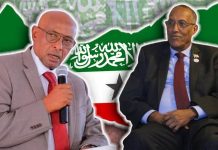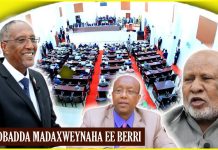Informing humanitarians worldwide 24/7 — a service provided by UN OCHA <!– TEMPORARY – COVID-19 – disabled – 2022/03/31 RW COVID-19 page: Find latest updates on global humanitarian responses –>
Find help on how to use the site, read terms and conditions, view the FAQs and API documentation.
Access your account or create a new one for additional features or to post job or training opportunities.
Latest humanitarian reports, maps and infographics and full document archive.
List of countries covered by ReliefWeb.
List of alerts, ongoing and past disasters covered by ReliefWeb.
List of organizations that are actively providing ReliefWeb with content.
Curated pages dedicated to humanitarian themes and specific humanitarian crises.
Open job opportunities in the humanitarian field.
Open training opportunities in the humanitarian field.
Somalia
MOGADISHU, December 9, 2021—The Somalia Electricity Recovery Project is set to increase access to cleaner, lower cost electricity for 1.1 million households, or approximately 7 million people, of which 3.5 million are women. The project also aims to reestablish a stable electricity supply and support regional integration.
Out of a population of about 15 million, 9 million Somalis lack access to electricity services, and the cost of power is among the highest in the world. In addition, almost nine out of ten Somali households are deprived in at least one dimension of poverty—monetary, energy, education, or water and sanitation (World Bank (2019) Somalia Poverty and Vulnerability Assessment). The combined impacts of the COVID‐19 pandemic, devastating flooding, droughts, and a desert locust infestation further undermine economic recovery and efforts to reduce poverty.
“Access to affordable electricity is critical for reducing poverty, as it helps increase household income, improve the business climate, and create jobs,” said Kristina Svensson, World Bank Country Manager for Somalia. “This project complements and leverages programs by the World Bank Group and those of international partners in Somalia by scaling up investments to improve service delivery.”
Access to electricity is also a pre‐requisite for the provision of adequate health and education services, and for responding effectively to the COVID-19 pandemic and future shocks. The project is set to enhance health and education services by providing electricity access to 205 health facilities and 380 schools.
90% of Somalia’s electricity is supplied through isolated diesel‐based mini-grids operated by private energy service providers (ESPs). The combination of a highly fragmented private electricity sector along with an installed capacity that is inadequate to serve current and future demand, has resulted in an inefficient and expensive supply given the lack of economies of scale. Somalia also has significant potential for using renewable energy for electricity generation, particularly solar and wind energy, as identified by numerous assessments by the World Bank.
“The project’s design builds on the World Bank’s experience of supporting local institutions in fragility, conflict & violence (FCV) affected countries, with the goal of enhancing local knowledge and capacity to improve service delivery and build back better using green and resilient solutions,” said Erik Fernstrom, World Bank Practice Manager for infrastructure in Southern and Eastern Africa.
The Federal Government of Somalia (FGS), as an active member of the Horn of Africa Initiative (HoAI), can also leverage the opportunities offered by regional integration to leapfrog the establishment of backbone transmission infrastructure and have access to diverse and low‐cost electricity supply from regional neighbors.
* The World Bank’s International Development Association (IDA), established in 1960, helps the world’s poorest countries by providing grants and low to zero-interest loans for projects and programs that boost economic growth, reduce poverty, and improve poor people’s lives. IDA is one of the largest sources of assistance for the world’s 74 poorest countries, 39 of which are in Africa. Resources from IDA bring positive change to the 1.3 billion people who live in IDA countries. Since 1960, IDA has provided $458 billion to 114 countries. Annual commitments have averaged about $29 billion over the last three years (FY19-FY21), with about 70 percent going to Africa. Learn more online: IDA.worldbank.org. #IDAworks
* * *
PRESS RELEASE NO: 2021/030/AFE
* * *
Contacts
Nairobi
Fatuma Hirsi Mohamed
fhirsi@worldbank.org
Washington
Daniella van Leggelo-Padilla
(202) 473-4989
dvanleggelo@worldbank.org
Somalia
Somalia
Somalia
Somalia
ReliefWeb's blog
ReliefWeb Labs projects explore new and emerging opportunities to improve information delivery to humanitarians.
Learn more about ReliefWeb, leading online source for reliable and timely humanitarian information on global crises and disasters since 1996.
ReliefWeb's terms & Conditions.
Contact us.
Service provided by UN OCHA
OCHA coordinates the global emergency response to save lives and protect people in humanitarian crises. We advocate for effective and principled humanitarian action by all, for all.
ReliefWeb's Terms & Conditions.
© 2022 all rights reserved.














